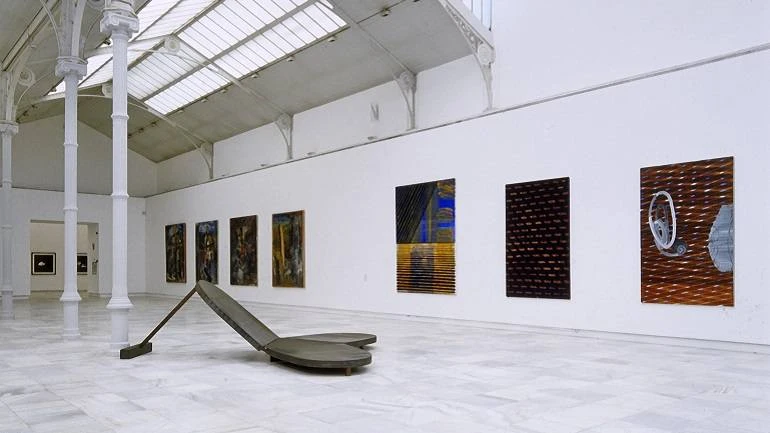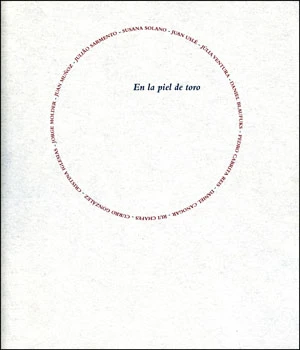En la piel de toro

Far from wishing to point out a common aesthetic movement, the exhibition curator, Aurora García, proposes "a sum of representative individuals within a range of positions and languages, which connect with the artistic and cultural substrate of the two countries". The exhibition is presented as a dialogue between ideas, means and media (painting, photography, sculpture and installation or projection of images), through pieces produced over the past two decades. Nevertheless, the tour reveals that these artists share interests and concerns, such as the human subject in Jorge Molder’s piece or that of Júlia Ventura, the absence of it, as in the case of nidos férreos by Rui Chafes or Pasamanos de Nîmes (1994) by Juan Muñoz, or its dematerialisation, as seen in the works by Daniel Canogar. The construction of artefacts or objects with a metaphorical language is evident in works by Cabrita Reis, as in Meus pais deram-me aquilo que podiam, alma da sua diversa (1993); as well as in Objeto y causa (1988) and Aquí yace la paradoja (1990-1991), by Susana Solano.
The direct appeal through stimuli that are formulated and translated from synaesthesia and paradox, make up Juan Muñoz and Julião Sarmento’s work. Conversely, sight and touch are protagonists in sculptures by Cristina Iglesias, whose work focuses on the complexity of perceptual fact which she explores using embossed surfaces and hanging print; a piece that seeks to build a metaphysical space as an extension of real space.
Alongside the review of photography and sculpture and from the surmounting of Conceptualism or formalist abstraction, painting confirms its quality as a visual way to tell stories. Thus, in the words of Aurora García, Curro González turns his paintings into "a chronicle of the present", not only the urban present but accuses "aggressive strategies that guide the manipulation of a multitude of images through technological means of communication." Conversely, John Uslé goes from, according to Garcia, a material painting "with a content of archaic and ritual memory" to another type linked to the mythology of the contemporary city and New York in particular. This shows Uslé’s need to reflect in his work the current every-day and his own present.
Artists
Organised by
Museo Nacional Centro de Arte Reina Sofía
Image gallery

